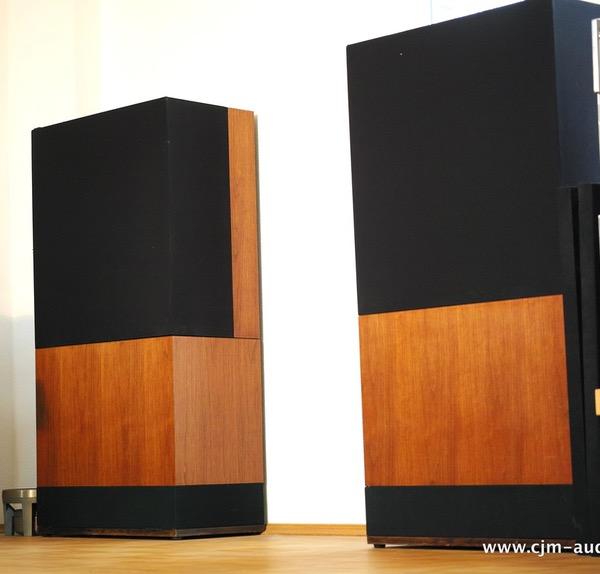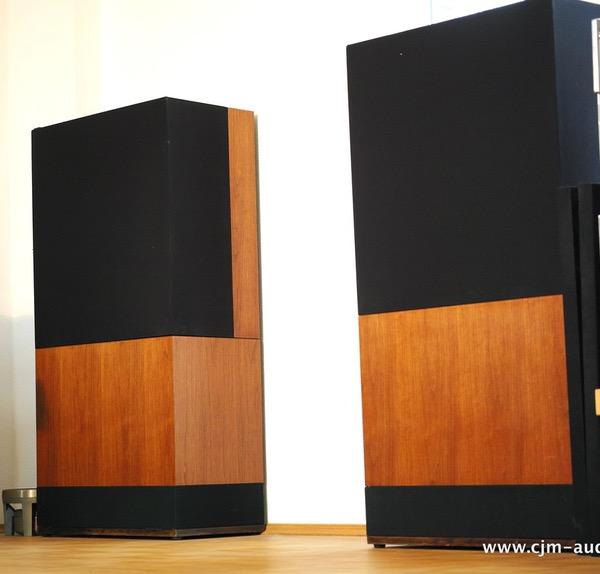
 A reader recently responded to a loudspeaker review complaining that, as set up for the review, the speakers were positioned 4-feet out from the wall behind them. Impractical, the poster commented, as he didn’t have the space in his room to do that. But I always position speakers that way and suspect that most reviewers do as well- though not all of them specifically state it. But I can’t help myself; I cut my teeth writing for our sister publication Stereophile. While dubious “truths” abound in audiophilia, this one has a real basis in “the science.”
A reader recently responded to a loudspeaker review complaining that, as set up for the review, the speakers were positioned 4-feet out from the wall behind them. Impractical, the poster commented, as he didn’t have the space in his room to do that. But I always position speakers that way and suspect that most reviewers do as well- though not all of them specifically state it. But I can’t help myself; I cut my teeth writing for our sister publication Stereophile. While dubious “truths” abound in audiophilia, this one has a real basis in “the science.”
I’ve often commented, in both blogs and reviews, on the importance of loudspeaker placement. Unless you have prior experience in finding the best location for speakers in your room, you’re likely to just unpack that shiny new pair and plunk them down in locations approved by the local décor police. But you’re unlikely to be hearing them at their best.
The speakers will certainly sound sensational to you at first. How could they not? You chose them, after all, spending a year (or decade) ferreting out every detail about them from manufacturers’ literature and reviews. You heard them at your local Hi-Fi Shoppe (though sadly this is a vanishing breed except in large cities) and finally pulled out your platinum credit card to do the deed.
But room acoustics are a hard taskmaster, and not long after the first setup you get the nagging feeling that all isn’t quite right. The bass, in particular, is big and full- impressive at first but wearing over time. The good news is that you’ll soon get accustomed to it, or even like it. Fair enough. But the bad news is that you’re likely hearing the same speakers the designer experienced before giving the go-ahead for production, or the same speakers that were reviewed or that your heard in the dealer’s showroom.
A commercial speaker designer is faced with several problems that can only be judged in his own listening space, supplemented (hopefully, though not always) by measurements. These issues can’t be totally eliminated. Any subjective room elevations will inevitably be affected by the size of the room and the positions of both the speakers and the listener in that room. Beyond the measurements, certain subjective decisions must be made by the designer in the final “voicing ” of the speaker.
Such decisions might not match up with those that would have been made in your room. Most of the issues involve the speaker’s bass performance below roughly 300Hz. Apart from a room with mostly hard surfaces and few absorptive furnishings (resulting in an often harsh and confused sound), it’s the bass region that’s most often the trickiest to deal with in domestic rooms. As I’ve frequently stated in the past (and no doubt will again!), no review can tell you want a speaker’s bass will sound like in your room, but only how it sounded in the reviewer’s room.
Most loudspeakers are designed to be set up at least some distance away from adjoining walls. Designers know this is how critical listeners are likely to set them up. But there have been occasional exceptions to this in the past, with speakers deliberately designed to work best against the wall behind them. Two of the best known, but long out of production from now-defunct companies, were the Allison Audio Model One from the 1970s and the Snell Acoustics Type A (and its various later upgrades) from the same decade (the Snells are shown in the photo above). Interestingly, if you search for Allison Audio on-line you’ll get a demo of a used pair set up well away from the walls- totally skewed from designer Roy Allison’s original intent. The Snells were a little more placement flexible, but their wide, tall, and deep cabinets screamed to be positioned with their backs flush against a wall. I owned a pair of them in the mid- ’80s and can vouch for that placement.
One other wrinkle that speaker designers must deal with is called baffle step, or (more confusingly) the 2pi to 4pi transition. Centered somewhere in the 200Hz region (though the affect is not abrupt and the exact frequency will depend on the size of the front baffle), the sound from the speaker transitions from uni-directional (where the midrange and highs radiate in all directions. This is an issue because the sensitivity of the range above the baffle step will typically be a maximum of 6dB higher than the sensitivity below it.
This requires compensation (often ignored in cheap speakers as the compensation is usually performed in the crossover network, increasing the number of crossovers parts needed and thus the cost). The frequency of this “baffle step,” and whether to use a full 5dB adjustments or less, will depend on the size of the baffle and how the designer anticipates the speaker will be used. But as discussed earlier, the speaker’s bass response will not only be dependent on this baffle step but also the size of the room and the positioning within that room of the speakers and the listener. No designer can anticipate the latter with precision, so the result is often an educated guess. And since slightly lean bass is considered preferable by many audiophiles to overdone, bloated bass, the designer is likely to assume that the speakers will be positioned well away from those troublesome walls.
A home theater setup can be even more restrictive as to how the speaker array is positioned since the position of the TV (or projection screen) must be taken into account. The speaker positions must support that screen- a consideration foreign to the 2-channel audiophile. But the home theater fan anathema- the electronic room compensation (Audyssey, Dirac Live, and the like) that’s built into virtually all of today’s AV receivers and pre-pros. It’s not a perfect solution (nothing is) but if you must shove those speakers against the wall it can help. One caveat: if the speakers have rear-facing ports, keep their back panels at least 6-inches away from the wall!
